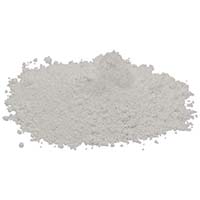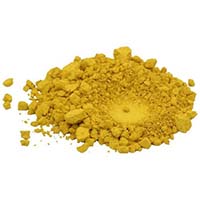Sexy title, no?
So, at the moment, our company is without a media person to help us create blog posts and social media updates. That's the bad news. The good news is that I have to dust off my typewriter and start writing down some of the factoids that exist in my head after 25 years running this business.
Here's the question that came in today:
Hello! I buy most micas from you all that contain mica, titanium dioxide, and iron oxide.
I’m struggling though when it comes to mixing the three together from raw ingredients. What parts do you typically use, say for a colorant like antique gold that contains mica (77019), titanium dioxide (77891), iron oxide (77491), and iron oxide (77499)
Is it like a 3 parts mica to 1 part Titanium dioxide to 0.5 parts iron oxide?
I’m just having a bad time when it comes to achieving similar mixtures to you what you presell while mixing the iron oxides that I purchased like red oxide, black oxide, and brown oxide.
So basically, here is our Antique Gold . . .

. . . and this color was actually recently discontinued by the manufacturer so we are going to be replacing it with something similar. In the meantime, I would guess this customer is trying to recreate it from scratch using the ingredients in the product:
So, short answer is: you can't do this. You cannot create a special effect mica powder by mixing together the raw ingredients that are the components in that powder.
Here is the reason why: special effect mica powders are manufactured in layers, where the mica is layered with the white and layered again with the pigment for color. It is the effect of light passing through these layers that creates the special effect of pearlescence.
There are lots of charts and graphs that can show this, but here is how I explain it in words:
Imagine you have a sheet of Clear Glass (the mica). On one side, you paint it white (the titanium dioxide). On the other side, you paint it gold (the iron oxide). But the paint you use isn't opaque, it is translucent. Now, break the glass into little chunks. When you look at those chunks, the light will travel into the middle of them, and reflect off the yellow and white paint colors and reflect back to you in a shimmery, exciting way. This is (kinda) how special effect mica is made.
What this customer is trying to do is different. In this case she is taking the broken glass chunks (not really, but in my analogy) and then she is stirring them together with white and gold pigment. In this scenario, I don't really care if she is using powdered colors or liquid colors. Either way, she is coating the glass (mica). It's her only option. By coating the substrate, light can no longer pass through, and light has no means of bouncing and blending in the air to create that cool effect. It is always going to be a dull, matte color.
The resulting product is certainly useable, it is just never ever going to match a mica powder.
OK, so hopefully that helps. Welcome to how my brain works.
Kaila Westerman
CEO/kitchen cleaner/worrywart
TKB Trading, LLC









